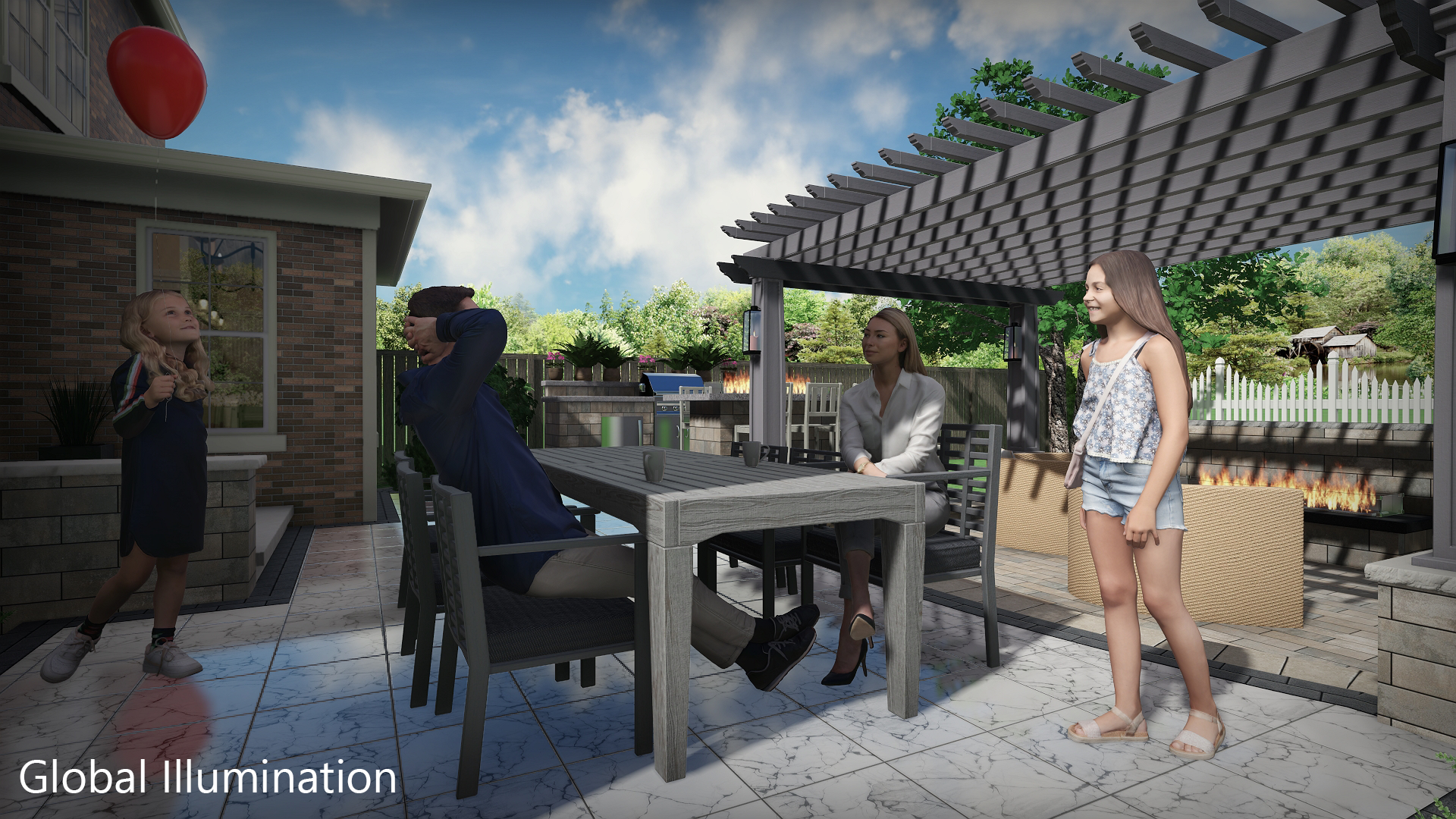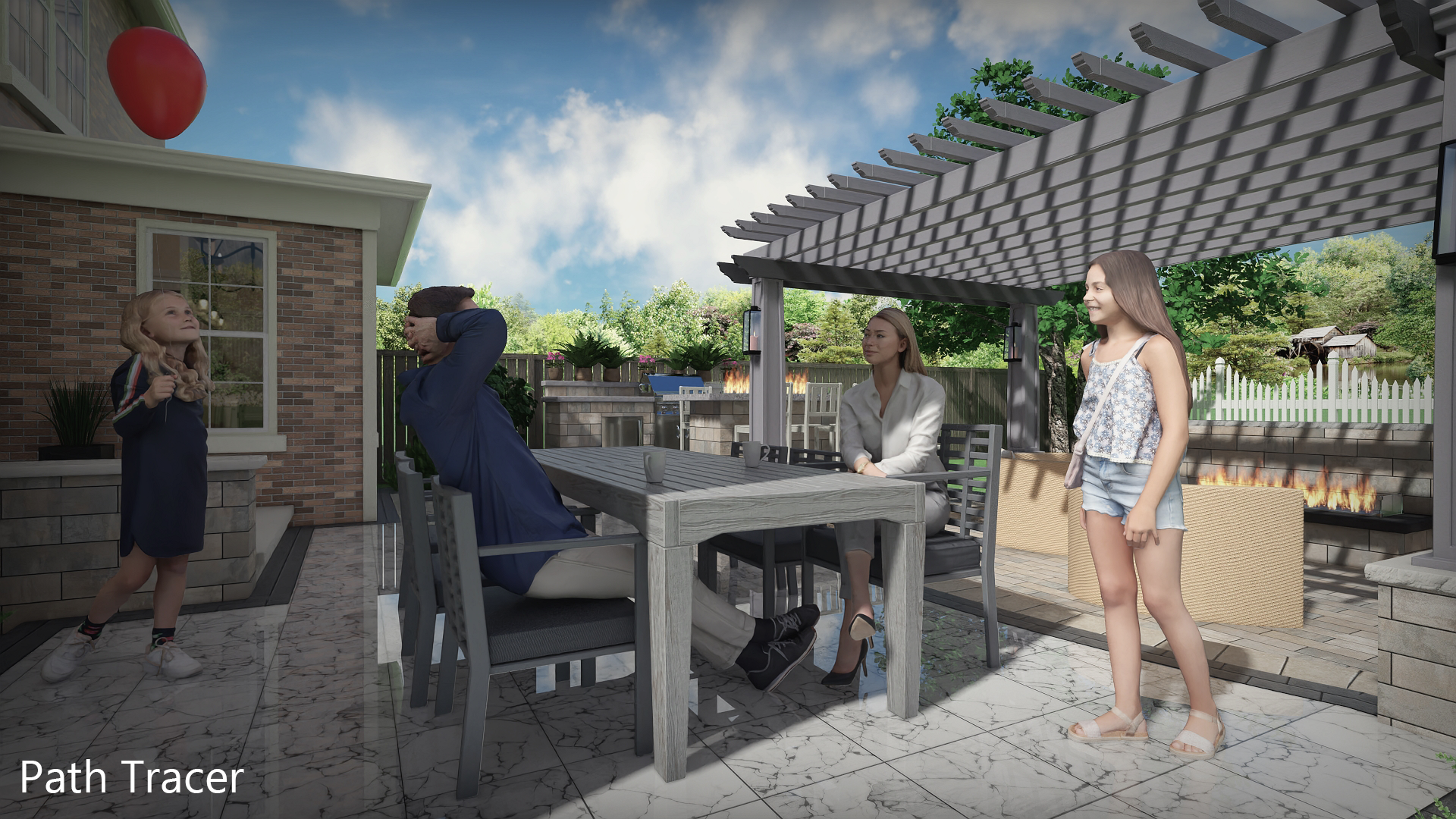Global Illumination and Path Tracing
There are two options for rendering your designs with the highest possible quality: Global Illumination and Path Tracing.
Global Illumination
Global illumination improves realism by simulating the way sunlight interacts with surfaces and objects in the scene. This is especially useful for areas in shadow that are not directly illuminated by the sun.
Global illumination uses a rendering technique called "ray tracing." It does this by casting millions of virtual light rays into the scene to determine how surfaces are illuminated, either by direct sunlight or by light reflecting off other surfaces.
However, these calculations are very time-consuming, even with a fast video card. A complex scene can take anywhere from several seconds to over a minute or more to render each frame when creating a movie or taking a screenshot. Therefore, we recommend leaving global illumination disabled until you are ready to produce your final renders.
Tip: You can preview global illumination while designing by enabling it in the Graphics Settings. When enabled, the global illumination will be calculated as soon as your viewpoint remains stationary for over one second. The result will fade in as the illumination is calculated. As soon as you move the viewpoint, the results will be removed until the next time you stop moving.
Path Tracing
Path tracing takes global illumination to the next level by simulating the complex paths light rays take as they bounce around a scene. This enhances realism by capturing subtle lighting effects, such as light reflecting off multiple surfaces, and improves the quality of reflections.
Path tracing typically takes longer to render, and is only available for screenshots, not movies or panoramas.
Comparing Global Illumination and Path Tracing
The following shows a comparision between the rendering options:
| Option | Indirect Lighting | Reflections | Use | Speed |
|---|---|---|---|---|
| Realtime | Low | Simulated | Design, screenshots, movies | Fastest |
| Global Illumination | Medium (one bounce) | Simulated | Design (preview only), screenshots, movies | Slow |
| Path Tracing | High (multiple bounces) | Accurate | Screenshots | Slowest |
The following shows a design rendered with each method.


